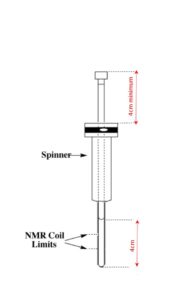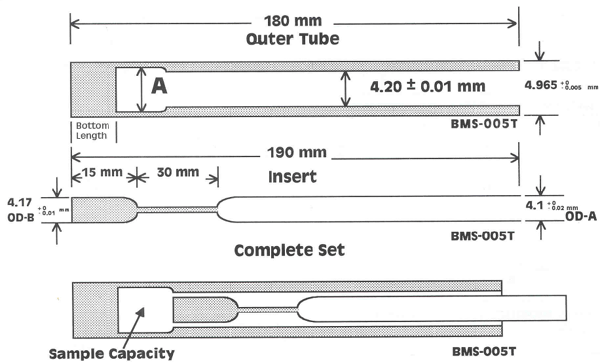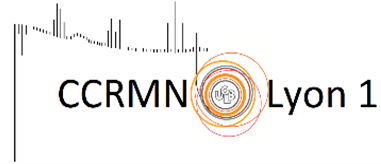I am a newcomer at Lyon university, what should I do to perform NMR analyses?
Please visit this link : if this is your first visit, you will be prompted to register yourself. Then we can configure your access rights to our network drive to allow you to retrieve your spectra.
If you wish to pass the NMR accreditation to run your analysis yourself, please get in touch with CCRMN staff.
If you want us to run your NMR analyses, please fill the online analysis request form
Your data are saved on a Lyon1 University server. Contact us to have your access rights set up.
- Choose the 300 MHz if ...
-Your molecule is small (MW < 300g/mol)
-You want to run a 13C analysis with at least 50mg compound
-You do not need a good resolution.
-You want to run common analyses on abundant nuclei (1H, 13C, 11B, 31P, 19F, COSY, HSQC, HMBC).
-Room temperature suits your analysis.
- Choose the 400MHz if ...
-You have between 5 and 20 mg of a small-sized molecule to run a 13C analysis or you have 100mg in your sample and you are interested in 15N NMR.
-You want to run a DOSY on a rather concentrated sample.
-You want to run an analysis on nuclei with weak sensitivity.
-You need to work at a different temperature than room temperature (available temperatures range from 5 to 80°C).
- Choose the 500MHz if ...
-You have less than 5 mg of a small-sized molecule to run a 13C analysis
-You have less than 50mg in your sample and you are interested in 15N NMR.
-You expect complex spectra.
-You want to have a DOSY performed (runned n’existe pas) on a diluted sample.
-You want to run 19F-decoupled 13C experiments.
-You want to run combined experiments ( HSQC-TOCSY, HMBC-NOESY...) or new ones. You want to run an analysis on quadripolar and/or a quite insensitive nucleus.
-You want to run an analysis below 5°C or beyond 80°C.
What if my compound is not soluble?
Only the soluble part of your compound will be detected by the probe and the suspended particles will hinder the shiming process. Try heating your sample or chose another solvent (even a non-deuterated one if there is no other way). As a last resort, you can try solid-state NMR for example here .
What shall I do to get my NMR accreditation?
Let somebody from your research group show you how to run basic NMR experiments. As soon as you are able to run experiments with confidence, make an appointment with CCRMN staff. We will then test if you have the required skills not to be a hazard for the equipment, if you are autonomous using the spectrometer, and that you own the basics to produce at good quality spectrum.).
Access to 400 and 500MHz is restricted to people who have taken on an extra training course. If you need to use these spectrometers, contact us.
How should I prepare my samples?

NMR tubes must be clean and dry (dried in the oven vertically, upside down to avoid deformation), so must the caps. They must not be chipped. Do not hesitate to get rid of broken tubes. Half a euro disposable tubes are reasonably good for most applications, and if your lab is short on funding, we often donate tubes, contact us.
The solvent level must be sufficient especially if the analyses are not performed at room temperature.
The solution must be limpid. Only the dissolved part of the compound will be analysed.
Homogenize your sample during preparation.
What if I have a tiny amount of compound ?

Run your analysis on the 500MHz, use a Shigemi tube that minimizes the volume of solvent required. If tests on the 500MHz are not satisfactory, we will apply for time slots to the NMR Very High Field Centre where we will access to a cryo-probe spectrometer.
What shall I mention in the experimental part of my publications?
You should at least mention the spectrometer and its 1H resonance frequency (Bruker Avance III 300, 400 or 500MHz), the probe (usually Bruker BBFO, sometimes BBI on the 500MHz) and the NMR sequence you used (single pulse, decoupling, COSY, HSQC...), the number of scans and/or the length of the experiment.
In case of quantitative analyses, mention the flip angle and the time between 2 successive scans. In case of 2D experiments, you can indicate the number of increments which gives the resolution in the indirect dimension (TDF1 parameter). You can also add some words on data processing, for example the use of an apodization function or a zero-filling treatment. Concerning DOSY, contact us. For more information, see IUPAC recommendations .
